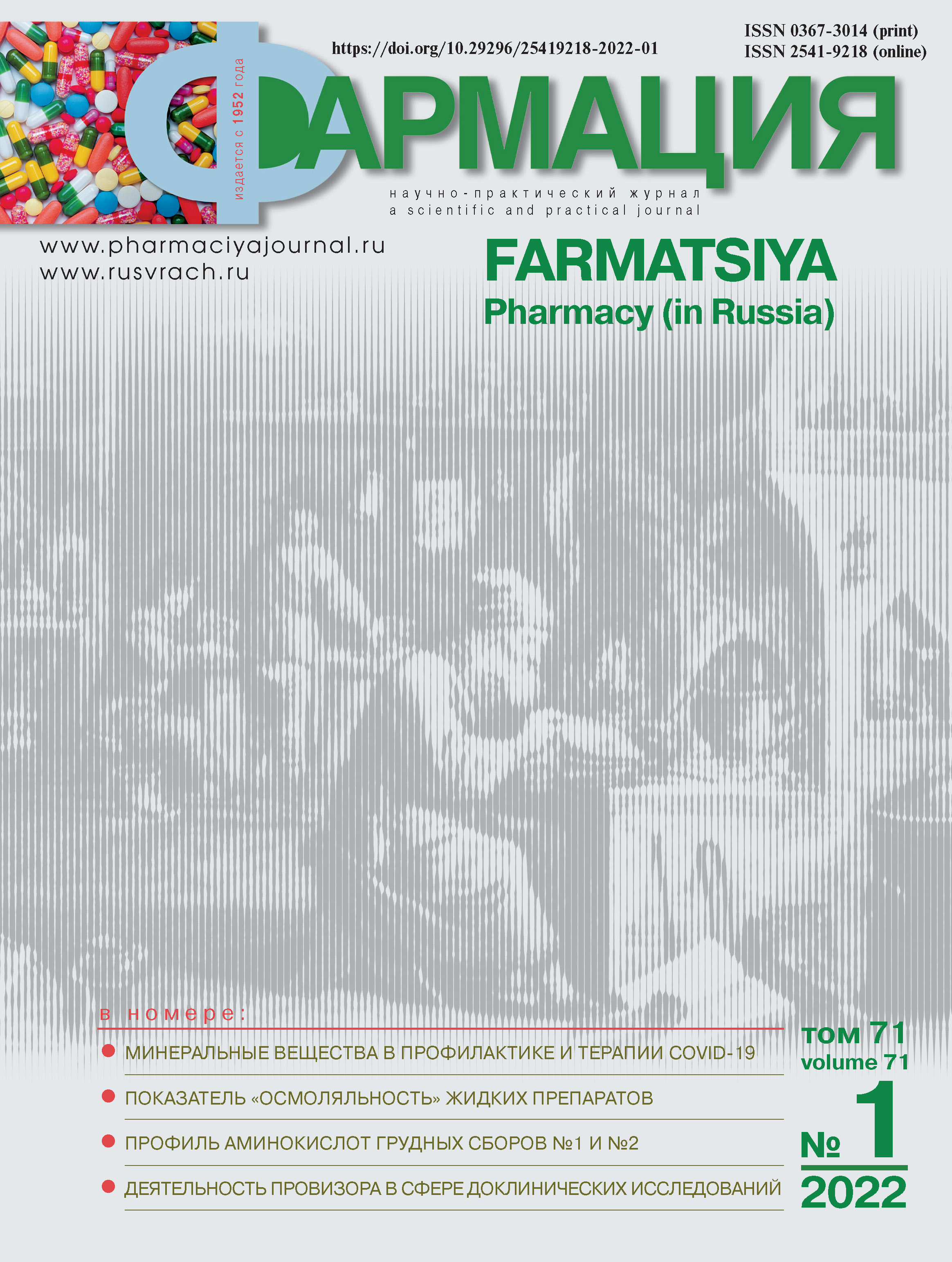Mineral Carriers for Oral Drug Delivery
- 作者: Bondarev A.V.1, Zhilyakova E.T.2, Avtina N.V.2
-
隶属关系:
- Regional State Budgetary Healthcare Institution «Shebekino Central District Hospital»
- BelgorodState National Research University
- 期: 卷 71, 编号 1 (2022)
- 页面: 10-16
- 栏目: Articles
- URL: https://journals.eco-vector.com/0367-3014/article/view/113614
- DOI: https://doi.org/10.29296/25419218-2022-01-02
- ID: 113614
如何引用文章
详细
全文:
作者简介
Alexander Bondarev
Regional State Budgetary Healthcare Institution «Shebekino Central District Hospital»
Email: alexbond936@yandex.ru
Candidate of Pharmaceutical Sciences, Head of Pharmacy 俄罗斯联邦,
Elena Zhilyakova
BelgorodState National Research University
Email: ezhilyakova@bsu.edu.ru
Doctor of Pharmaceutical Sciences, Professor, Head of the Department of Pharmaceutical Technology 俄罗斯联邦,
Natalia Avtina
BelgorodState National Research University
编辑信件的主要联系方式.
Email: avtina@bsu.edu
Candidate of Pharmaceutical Sciences, Associate Professor, Associate Professor of the Department of Pharmaceutical Technology 俄罗斯联邦,
参考
- Dutta R.C. Drug carriers in pharmaceutical design: promises and progress. Curr. Pharm. Des., 2007. 13 (7): 761-9. doi: 10.2174/138161207780249119.
- Verheyen S. Mechanism of increased dissolution of diazepam and temazepam from polyethylene glycol 6000 solid dispersions. Int. J. Pharm. 2002; 249 (1-2): 45-58. DOI: 10.1016/ s0378-5173(02)00532-x.
- База данных медицинских и биологических публикаций [Электронный ресурс]. Национальный центр биотехнологической информации США. 2021. Режим доступа: https://pubmed.ncbi.nlm.nih.gov
- Государственный реестр лекарственных средств [Электронный ресурс]. М-во здравоохранения РФ. М., 2021. Режим доступа: http://grls.rosminzdrav.ru
- Бондарев А.В., Жилякова Е.Т. Использование сорбционных процессов в технологии систем доставки лекарственных веществ. Фармация и фармакология. 2019; 7 (1): 4-12. doi: 10.19163/2307-9266-2019-7-1-4-12.
- Сысуев Б.Б., Плетнева И.В. Современное состояние исследований разработок в области инновационных лекарственных форм и их модификаций. Вестник Волгоградского государственного медицинского университета. 2014; 4 (52): 7-12.
- Бондарев А.В., Жилякова Е.Т., Демина Н.Б. и др. Перспективы использования медицинских глин. Разработка и регистрация лекарственных средств. 2019; 8(4): 27-31. doi: 10.33380/2305-2066-2019-8-4-27-31.
- Sher P., Insavle G., Porathnam S. et al. Low Density porous carrier drug adsorption and release study by response surface methodology using different solvents. Int J. Pharm. 2007; 331: 72-83. doi: 10.1016/j.ijpharm.2006.09.013.
- Song S.W., Hidajat K., Kawi S. Functionalized SAB-15 material as carrier from controlled drug delivery: Influence of surface properties on matrix drug interactions. Langmuir. 2005; 21: 9568-75. doi: 10.1021/la051167e.
- Andersson J., Rosenhoim J., Areva S. et al. Influences of material characteristics on ibuprofen drug loading and release profiles from ordered micro- and mesoporous silica matrices. Chem Mater. 2004; 16: 4160-7. doi: 10.1021/cm0401490.
- Charney C., Begu S., Tourne P., Nicole L., Lerner D., Devoisselle J.M. Inclusion of ibuprofen in mesoporous template silica: Drug loading and release property. Eur. J. Pharm. Biopharm. 2003; 57: 533-40. doi: 10.1016/j.ejpb.2003.12.007.
- Diab R., Canilho N., Pavel I. et al. Silica-based systems for oral delivery of drugs, macromolecules and cells. Advances in Colloid and Interface Science., 2017; 249: 346-62. doi: 10.1016/j.cis.2017.04.005.
- Jayrajsinh S., Shankar G., Agrawal Y.K. et al. Montmorillonite nanoclay as a multifaceted drug-delivery carrier: A review. Journal of Drug Delivery Science and Technology. 2017; 39: 200-9. doi: 10.1180/0009855013640007.
- Ahuja G., Pathak K. Porous Carriers for Controlled/ Modulated Drug Delivery. Indian J. Pharm. Sci. 2009; 71 (6): 599607. doi: 10.4103/0250-474X.59540.
- Gupta B., Poudel B.K., Ruttala H.B. et al. Hyaluronic acid-capped compact silica-supported mesoporous titania nanoparticles for ligand-directed delivery of doxorubicin. Acta Biomater. 2018; 80: 364-77. doi: 10.1016/j.actbio.2018.09.006.
- Khatoon N., Chu M.Q., Zhou C.H. Nanoclay-based drug delivery systems and their therapeutic potentials. Journal of Materials Chemistry. 2020; 8 (33): 7335-51. DOI: 10.1039/ d0tb01031f.
- Душкин А.В., Гайдуль К.В., Гольдина И.А. и др. Антимикробная активность механохимически синтезированных композитов антибиотиков и наноструктурированного диоксида кремния. Доклады Академии наук. 2012; 443(1): 120-122.
- Zhang H., Shahbazi M., Da Silva T.H. Diatom silica microparticles for sustained release and permeation enhancement following oral delivery of prednisone and mesalamine. Biomaterials. 2013; 34 (36): 9216-9. doi: 10.1016/j.biomaterials.2013.08.035.
- Lin H.M., Xing R., Wu X. et al. Multifunctional SBA-15 for magnetically oriented and PH targeted delivery of Ibuprofen. Materials Research Innovations. 2013; 17 (6): 360-5. doi: 10.1179/1433075X11Y.0000000068.
- Bondarev A., Zhilyakova E., Bondareva N. et al. Classification and Systematics of Medical Clay. Advances in Biological Sciences Research. 2019; 7: 44-6.
补充文件





